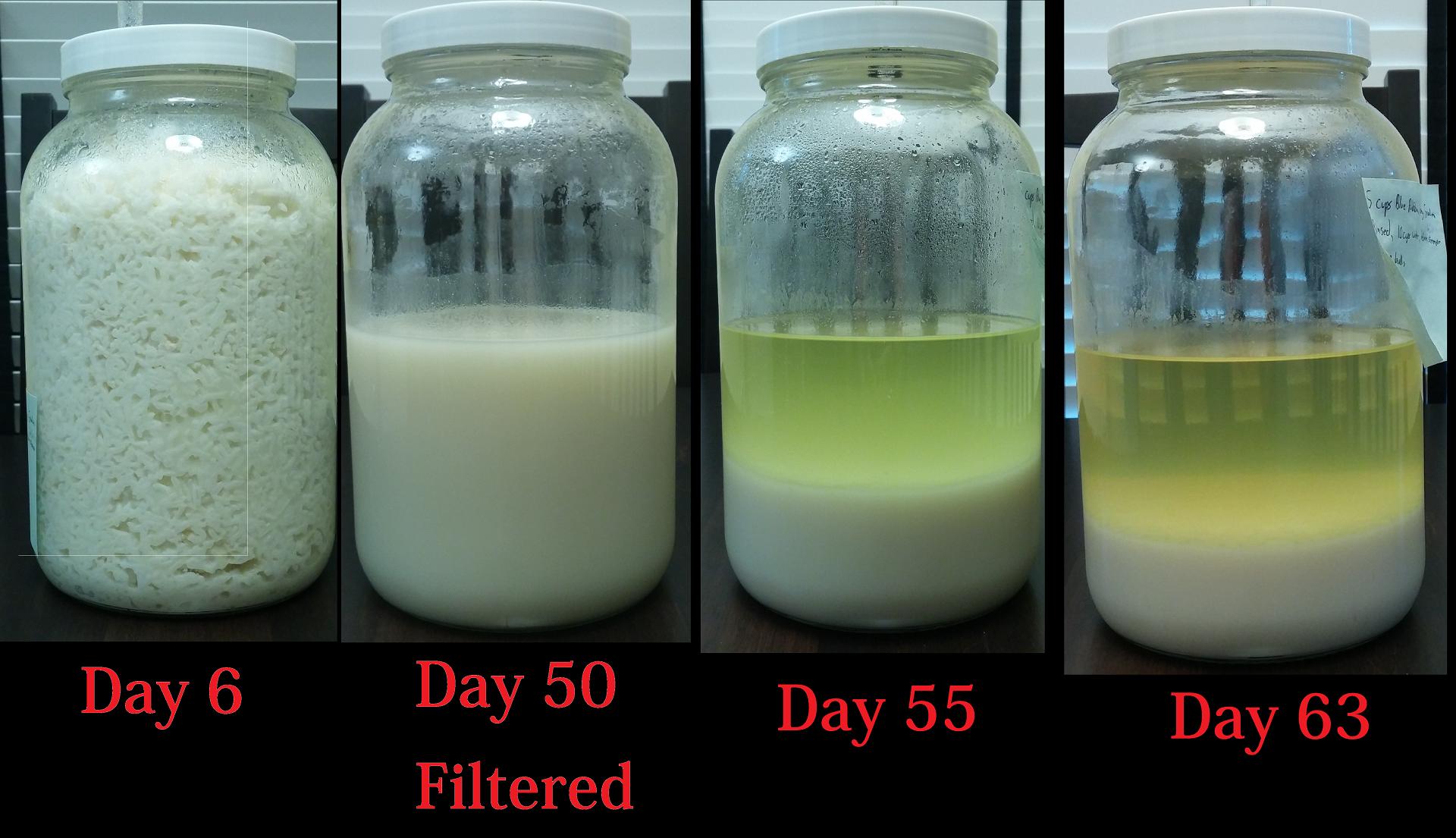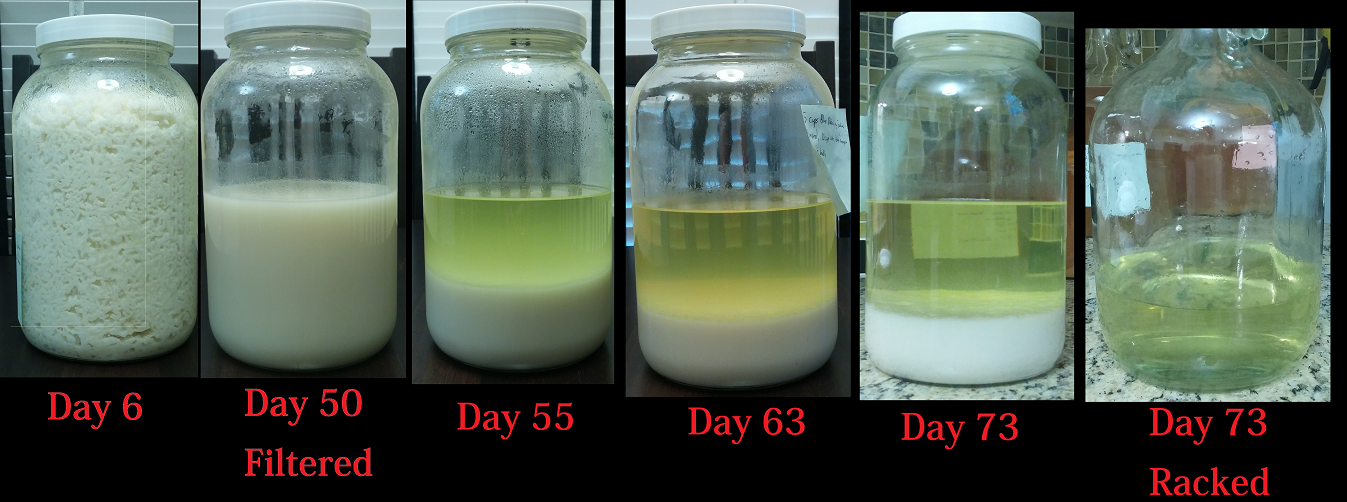How's it going?
Still waiting for it to clear more before racking:


How's it going?

Still waiting for it to clear more before racking:

Looks like there is quite some air and oxygen inside. Doesn't it turn sour over time?
Made it only once before in the same container with half the rice/liquid and it didn't happen to me. Can't say for certain why, might end up happening this time, this is only my second batch of this stuff. It might if given enough time, but don't know how long that would take. I'll probably rack once, let it settle again, then bottle, by then I would be around day 90 overall.
I've read that others in this thread have seen souring long before the point I'm at, and from other reading in this thread I would suspect it is related to fermenting temp being too high, or that the higher the temp the higher the likelihood of souring. Lots of other possible variables too though, sanitization, ingredients, what yeast/mold was used, and/or its particular source, so I can't say for sure.
Never thought about temperature being a factor in there!
You've never attempted to control your ferm temps, start to finish?
Made the biggest difference in the world for my beers!
And old refrigerator, and a temp controller for the 'fridge, and you're in 'bidness!
I always thought that this would only take a role in controling the esthers and eventually fusel alcohols produced by the yeast. Never thought about bacteriel growth though....
I am at the beginning of brewing beer, have some years of experience in making mead, whine and cider, but just did recently start with beer. New things to learn every day

That sounds like my seller (~US$12), they sell in quantities of 5, 10 or 15 packs?
I'm only on my second batch, but I think I'm going to try it after 3 weeks, which is coming up this weekend. First batch I let go for 4 weeks (probably too cold, got poor conversion and what tasted like a really strong lacto infection), current one is in my ferm chamber at 22C.
I threw out the jasmine rice batches this morning, had started to form black mould. I may try like wongjau said in the future (still have ~2kg of it) and accept the lower yield/different taste, but am probably going to buy a 20kg sack of glutinous rice assuming that this one comes out tasting good.
Ok, so I haven't made a batch of this in a while. I think it's time to give it another go. I have made two perfect batches that tasted amazing and a few that turned sour.
So my question is, how long do yeast balls stay viable? I have an unopened bag of Onto Yeast that has been in a cabinet (not refrigerator) for about a year now. Will the yeast still be viable or are they dead after that long?
Should I go ahead and try a batch or should I just order more?
Ok,. I have made two perfect batches that tasted amazing and a few that turned sour.
I've taken a break from making rice wine over the summer but now that fall is coming I'm thinking about starting a new batch. Has anyone tried fermenting with ginger?
How so, using the ginger as a source for mold and yeast, or as a flavoring?
As a flavoring, but i think maybe it would be better to add after bottling
So my latest batch turned out to be my best yet!
I got just over 2 liters of wine from 8 cups of rice. Interestingly, I found the amount of bottled wine equal to the amount of water I used to cook the rice.
This result has me encouraged to continue making this and to perfect my technique and see if I can manage to get consistent results every time.
I am also encouraged to start experimenting with different amounts of water and adding flavorings to the finished product. It's cheap enough where I can make repeated batches and toss it out if it turns out really bad.
I think what ruined previous batches for me was adding too much rice to the jars and when the rice expanded in the first few days it touched the cheese cloth, which made me open the jar to scoop out rice (with a sanitized spoon), but I think it got infected when I did that. I'm pretty sure the key is to not open the jars until you bottle it, just leave it and let it be!
None of the bodegas in my area carry yeast balls or red yeast rice. Neither seem to be carried on Amazon anymore.
Anyone know someplace in the DC area to buy these?
TIA.
Enter your email address to join: